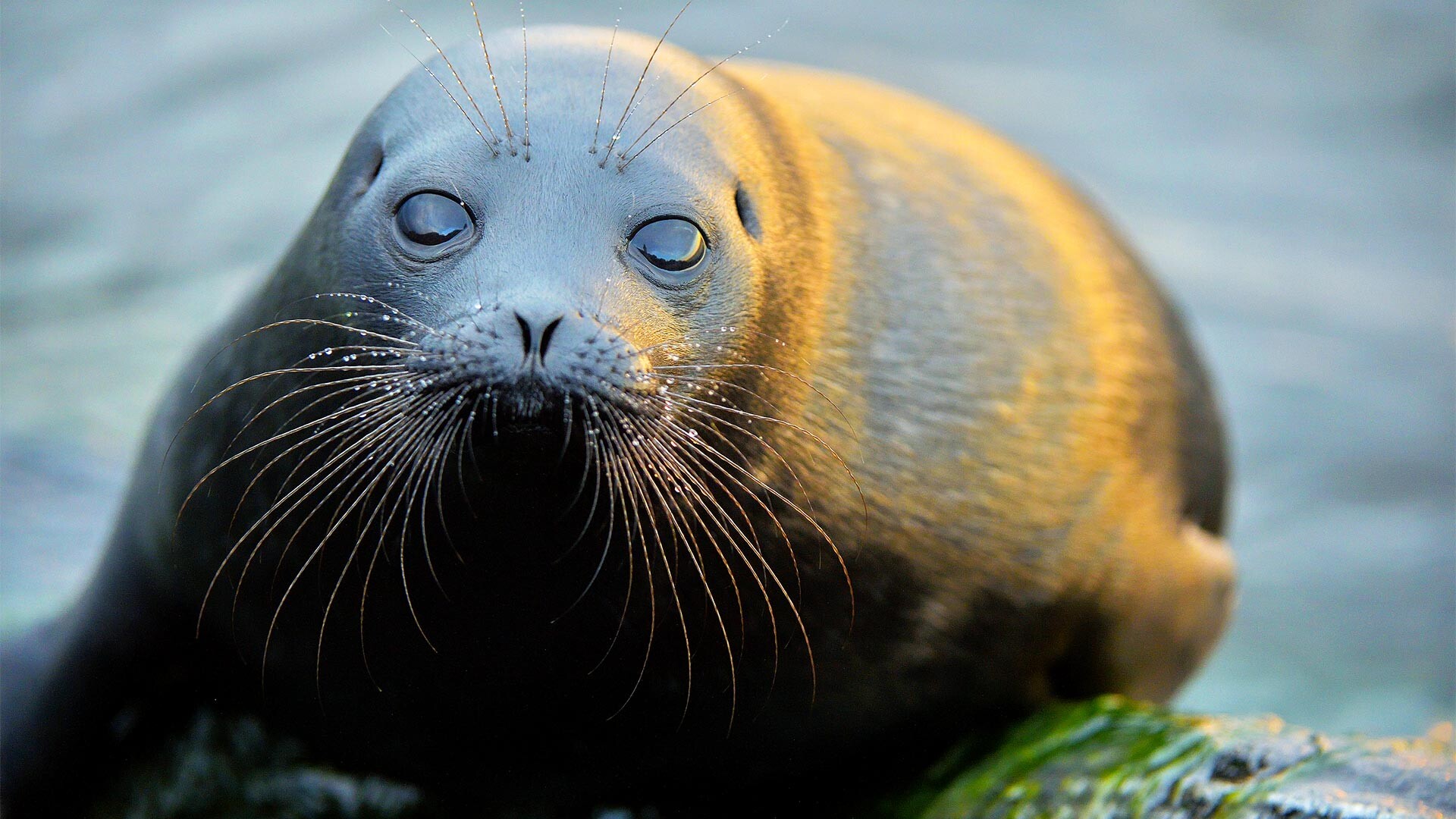
In the middle of July 2022, St. Petersburg’s social networks were taken by storm by a video of a seal (nerpa) that came out to the people from the water and lay down on the embankment’s steps to enjoy the city at night. ‘Little bun’, ‘star’ and even ‘the symbol of the city’ – such comments were left by the citizens of St. Petersburg. This is the Baltic seal – a species of ringed seals that lives in the waters of the Gulf of Finland. And they are extremely rare.

The Gulf of Finland is home to 200-300 Baltic seals; most of them live on the territory of Russia (several seals also live close to Estonia and Finland). Their population began to decrease rapidly at the end of the 20 century and they are now on St. Petersburg’s Red List.
The exact reason for this is still debated: some scientists believe it’s linked to human activity, some think it’s because of warm winters with little snow. To give birth to cubs and feed them, nerpas need coastal ice that persists for at least a month, but, due to the warm winters, it often doesn’t have time to form.
Fishermen and vacationers find tiny malnourished Baltic seal cubs every now and then on the shores of the Gulf of Finland. Until recently, no one knew what to do with them. Only at the beginning of the 2000s, volunteer zoologists Vyacheslav Alexeev and Elena Andrievskaya appeared, who started saving and rehabilitating Baltic seals. Since 2014, the ‘Baltic Seal Friends Fund’ has operated in St. Petersburg under their leadership. The urban water utility has allocated land in the village of Repino for a rehabilitation center. It’s there where lost cubs are prepared for their life in the wild. Up to today, they have saved 130 Baltic seals.

St. Petersburg stands on the river Neva (it connects Lake Ladoga and the Gulf of Finland) and it’s full of canals, which is why it’s dubbed “Northern Venice”. It’s because of these canals that the Baltic seals have access to the city. For example, a local woman recorded a video of a Baltic seal that was hunting in a river near Narvskaya metro station in November 2022.
Baltic seals have been spotted in the middle of the city, as well, in the Griboyedov Canal, near the Peter and Paul Fortress and at different embankments. Today, many citizens of St. Petersburg know that if a seal looks healthy and well-fed, there’s no reason to immediately panic. The animal might just be relaxing on the shore, enjoying the sunset and then be off about its business. But, if it looks sick, the zoologists have to be informed.
However, there are not many city seals – usually, these wild animals stay away from humans and go a little further to the West from Kotlin Island.

Nerpas are overall not too big in size. But Baltic seals are one of the largest representatives of their species. With a body length of up to one and a half meters, they reach a weight of 120-130 kilograms. They need a large amount of body fat to survive in the cold waters of the Baltics.
A ringed pattern on their dark fur gives them the cutest of looks (from which their name – ringed seals – derives), as well as giant bottomless eyes that can melt any heart.
Baltic seals get such an expressive look when they spend a long time out of the water – their organism produces a special secretion to moisten their eye mucosa.

Their enchanting looks aside, Baltic seals, as all seals, are, first of all, predators. They are not friendly towards each other, but periodically rest not far from each other on the rocks – this way, it’s easier for them to spot a potential danger.
Nerpas can hold slippery and large fish in their teeth and they pack a bite. To say that you’re better off not patting one is an understatement!

In 2017, Russian zoologists conducted monitoring of Baltic seals with camera traps and found out that they, apparently, have a clear daily routine.
They go hunting at around 7:30 am and return to their favorite stones to relax on after 3:30 pm. They depart all together, but return one by one. Also, scientists noticed that there are more seals in the evening, which means that some of them left before sunrise.

Baltic seals have a close relative in the Ladoga ring seal that inhabits Lake Ladoga. It’s a touch smaller than the Baltic seal, but just as cute and friendly. The title of most famous seals of St. Petersburg goes to ‘Kroshik’ and ‘Shlissik’, who the locals saved several years ago and brought them to the Baltic Seal Friends Fund.
There were numerous attempts to release them into the wild, but they, swimming about for a while in the “wild” waters, always returned to people. In the end, it was decided to keep them in the rehabilitation center’s pool, which made them very happy. As the center’s specialists said afterwards, perhaps it’s linked to the fact that they were brought to the center at a very young age.
Just look at them rushing to breakfast!
Dear readers,
Our website and social media accounts are under threat of being restricted or banned, due to the current circumstances. So, to keep up with our latest content, simply do the following:
If using any of Russia Beyond's content, partly or in full, always provide an active hyperlink to the original material.
Subscribe
to our newsletter!
Get the week's best stories straight to your inbox